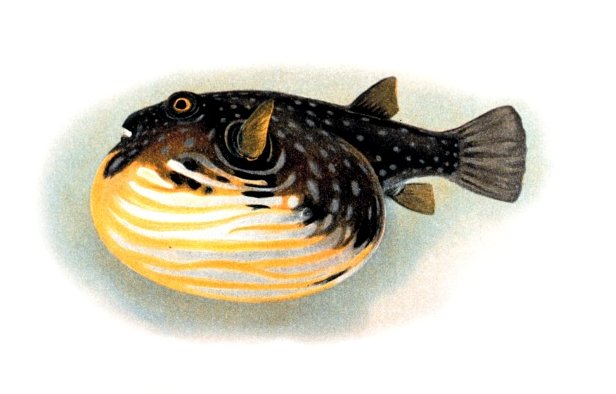- Puffer fish are known for their ability to inflate their bodies when threatened, making them appear larger and more intimidating.
- They belong to the family Tetraodontidae, which includes over 120 species of puffer fish.
- Puffer fish are found in both saltwater and freshwater environments around the world.
- They have a unique anatomy with the ability to ingest large amounts of water or air to puff up their bodies.
- Puffer fish have a specialized organ called the “puffer organ” that stores water or air, allowing them to inflate and deflate.
- Some species of puffer fish contain a potent toxin called tetrodotoxin, which can be deadly if consumed in large quantities.
- The toxin found in puffer fish is a defense mechanism to deter predators from eating them.
- Puffer fish are highly adaptable and can change their coloration to blend in with their surroundings.
- They have sharp beaks and powerful jaws that allow them to crush shells and feed on crustaceans and mollusks.
- Puffer fish have small, beady eyes that provide excellent vision and help them navigate their environment.
- They are slow swimmers and rely on their ability to inflate and puff up to evade predators.
- Puffer fish have excellent camouflage, often resembling rocks or coral to hide from potential threats.
- Some species of puffer fish are capable of producing sounds by grinding their teeth together, which may be used for communication or territorial defense.
- Puffer fish have an interesting courtship behavior, where males create intricate sand designs to attract females.
- They are known to be intelligent and curious creatures, often exploring their surroundings and investigating objects.
- Puffer fish have a variety of patterns and colorations, ranging from vibrant stripes to intricate spots.
- They have unique teeth that continuously grow, helping them maintain their ability to crush shells and eat hard prey.
- Puffer fish are capable of inflating rapidly within seconds when threatened, increasing their size by two to three times.
- They have a relatively short lifespan, with most species living for about 5 to 10 years.
- Puffer fish are popular in the culinary world, particularly in Japanese cuisine where they are known as “fugu.”
- The preparation and consumption of fugu require specialized training and licensing due to the potential toxicity of the fish.
- Puffer fish have a fascinating circulatory system that allows them to tolerate low oxygen levels in water.
- They can survive in brackish water with varying salinity levels, making them adaptable to different environments.
- Puffer fish have a unique swimming style characterized by short bursts of movement and frequent changes in direction.
- They are known to exhibit social behavior, often forming small groups or schools.
- Puffer fish have excellent hearing abilities, relying on sound to communicate and navigate in their environment.
- They are not strong swimmers and rely on their agility and ability to inflate to escape predators.
- Puffer fish have few natural predators due to their ability to inflate and their toxic defense mechanism.
- Some species of puffer fish are highly venomous, with their toxin being one of the most potent naturally occurring toxins known.
- Puffer fish have been observed using tools, such as shells or rocks, to create nests and protect their eggs.
- They are known to exhibit playful behavior, often engaging in games and chasing each other.
- Puffer fish are popular in the aquarium trade due to their unique appearance and interesting behaviors.
- They have been observed creating intricate patterns in the sand using their fins, potentially as a form of territorial display.
- Puffer fish have the ability to regenerate certain body parts, such as their teeth and fins.
- They have a slow metabolism and can go for long periods without food.
- Puffer fish have a complex digestive system that allows them to break down and extract nutrients from their prey.
- They have been studied for their ability to navigate using Earth’s magnetic fields, similar to other migratory species.
- Puffer fish have a natural buoyancy control system that allows them to hover in the water column.
- They have a unique reproductive strategy, with males creating intricate mating displays to attract females.
- Puffer fish have been associated with various cultural beliefs and legends, often symbolizing protection or good luck.
- They are capable of changing their skin texture to mimic their surroundings, further enhancing their camouflage.
- Puffer fish are highly territorial and will defend their feeding grounds and nesting sites from intruders.
- They have been known to exhibit territorial displays, such as flaring their fins and puffing up their bodies.
- Puffer fish have a highly efficient liver that helps detoxify and process the toxins they may encounter in their diet.
- They have a unique ability to absorb and store large amounts of water or air without causing harm to their bodies.
- Puffer fish have been studied for their potential medicinal properties, particularly in developing treatments for certain neurological conditions.
- They are important in maintaining the balance of marine ecosystems by controlling the population of invertebrate prey species.
- Puffer fish have been associated with folklore and mythologies in various cultures, often representing transformation or protection.
- They have a relatively slow growth rate, taking several years to reach their adult size.
- Puffer fish are fascinating creatures that continue to captivate researchers and enthusiasts alike with their intriguing adaptations and behaviors.
Facebook Comments


































